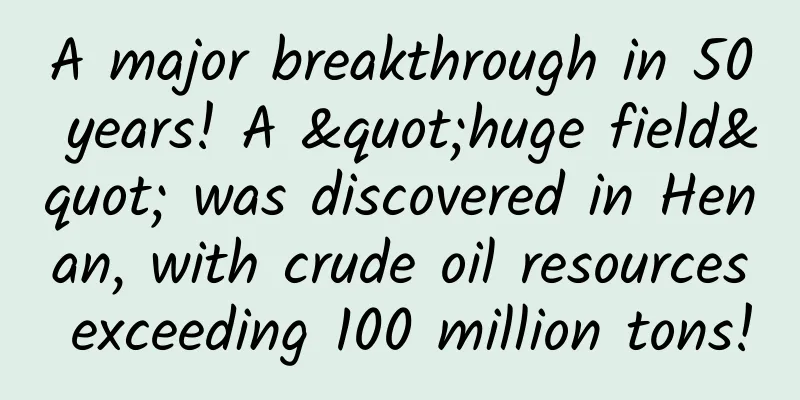From sundials to atomic clocks, how do we tell time?

|
Produced by: Science Popularization China Author: Chen Jiang (National Time Service Center, Chinese Academy of Sciences) Producer: China Science Expo Editor's note: In order to unveil the mystery of scientific work, the China Science Popularization Frontier Science Project launched a series of articles called "Me and My Research", inviting scientists to write articles themselves, share their scientific research experiences, and create a scientific world. Let us follow the explorers at the forefront of science and technology and embark on a journey full of passion, challenges, and surprises. I work at the National Time Service Center of the Chinese Academy of Sciences. The research object of our center is "time". When it comes to time, people often raise questions, thinking that time should be an inherent existence in the objective world. By checking a mobile phone or a watch, the time seems to be clear at a glance, so why do we still need to study time? In fact, the time we are discussing, more precisely, refers to the time frequency. This is an extremely important subject area, and the National Time Service Center is the only scientific research institution in my country that specializes in and comprehensively engages in basic research and applied research on time frequency, and is responsible for the generation, maintenance and broadcasting of my country's national standard time (Beijing time). Time frequency is an important subject (Photo source: veer photo gallery) Timekeeping tools: from sundials to mechanical clocks In the field of natural science, time is a basic physical quantity that measures the instant of an event and its duration. It is also a concept that we frequently use in our daily lives. Time is often closely related to frequency, and the two are collectively called time frequency. Time covers two elements: moment and time interval. For example, if I plan to attend a lecture that is scheduled to start at 8 a.m. and is expected to last for two hours, then 8 a.m. represents the moment, and two hours refers to the time interval. In modern society, "one second" is defined as the duration of 9,192,631,770 oscillations between two hyperfine energy levels of the ground state of the cesium-133 atom. This is also the physical quantity with the highest measurement accuracy. Nowadays, it is more convenient for us to obtain time information. We can get it instantly by just picking up our mobile phones. However, how did people measure time in ancient times? Here are three ancient methods of measuring time. Sundial: It is mainly composed of the dial (also called the dial plate) and the gnomon (also called the dial needle or sundial needle). During the day, the sun rises from the east and sets in the west, and the shadow cast by its light on the dial moves accordingly. When the sun is at its highest point (noon), the shadow of the gnomon will point to a specific point on the dial, which is usually marked as "noon" or "noon". By observing the position of the shadow of the gnomon on the dial and comparing it with the time scale on the dial, the current time can be determined. Sundial (Photo source: veer photo gallery) Fire clock: Also known as fire alarm clock, it is a device that people in ancient times used the burning of fire to measure time. Fire clocks use the stable burning speed of fire to measure time. On a specific structure, such as a stick of incense or a candle, a bell tied with cotton thread or other devices that can make sounds is strung on it. When the fire burns to a specific position, the cotton thread will burn off, causing the bell to fall and make a sound, thus marking the passage of time. Each time the bell falls or the sound is emitted, it represents the end of a period of time (such as a quarter of an hour, an hour, etc.), thereby realizing the measurement of time. There is a Chinese fire clock in the movie (Image source: Sina Finance) Fluid clocks: including clepsydra, water-operated instruments and common hourglasses, which use the steady flow of water or sand under the action of gravity to tell time. Fluid clocks measure time by marking the water level in a container or collecting the outflowing fluid. In a clepsydra, when water drips from the first bucket into the second bucket, the passage of time can be estimated by observing the rise in the water level in the second bucket. There is also a weighing clepsydra, which calculates time by weighing the weight of water flowing into the bucket. This links mass measurement and time measurement together. Fluid clocks were already a fairly reliable timekeeping tool in ancient society and were widely used in various fields such as agricultural production, religious ceremonies and daily life. In modern times, humans have invented precision timekeeping instruments such as pendulum clocks, mechanical watches, quartz watches, and electronic watches. The measurement accuracy of these instruments has been significantly improved, and the stability has also been greatly enhanced. In the Northern Song Dynasty more than a thousand years ago, skilled craftsmen created water clocks, which had an accuracy of only 10 minutes per day. About 600 years ago, the birth of mechanical clocks further improved the accuracy of timekeeping. In the 1930s, the emergence of quartz crystal oscillators further reduced the error, reaching a level of only one second in 300 years. The birth of the atomic clock The accuracy of human time measurement is constantly improving, so why do we need such high-precision time? How important is the accuracy of time to us? China's Tianwen-1 probe has successfully reached Mars, about 55 million kilometers away from Earth, and conducted close exploration and research. So what does this achievement have to do with time? In fact, its core principle involves a basic formula we are all familiar with - distance equals the product of speed and time. my country's first Mars exploration mission "Tianwen-1" probe successfully launched (Photo source: Xinhua News Agency reporter Hu Zhe) The probe will first be accelerated to the second cosmic velocity of 11.2 km/s. At such a long distance from Earth to Mars, if the probe has a 1 km altitude error near the Earth-Mars transfer orbit, it may have a distance error of up to 100,000 km when it arrives at Mars. Therefore, if the probe's time accuracy cannot reach one thousandth of a second, the result will not only miss Mars, but also be a thousand miles away. It can be seen that in deep space exploration missions, time accuracy is a crucial factor. Zhurong Mars Rover (Photo source: Public account Aviation Knowledge) With the emergence of quantum physics such as chips, computers and mobile phones have been born, and they have changed our lives. Only by controlling time at the microsecond level or even higher can humans study the properties of microscopic particles such as atoms and electrons in more detail. Just like measuring with a ruler, if its accuracy does not reach the millimeter level, it is impossible to accurately measure the length of objects of smaller scales, and thus it is impossible to deeply study the more subtle physical properties inside them. Therefore, only by improving the accuracy of time to a certain level can we explore the properties and lifespan of microscopic particles such as atoms and molecules. In the field of national defense, the maximum speed of some intercontinental missiles has reached Mach 26, equivalent to 800 meters per second. If our reaction time deviates by 0.3 seconds (that is, a blink of an eye, which takes about 200 to 400 milliseconds for humans), the missile may deviate from the intended target by 2.6 kilometers. In order to successfully intercept such missiles, the time accuracy requirement must reach one ten-thousandth of a second. This contest between offense and defense highlights the importance of time accuracy. In modern information warfare, researchers generally believe that the importance of atomic clocks even exceeds that of atomic bombs. How do atomic clocks work? The duration of 9,192,631,770 cycles of radiation during the transition of the ground state hyperfine energy level of cesium-133 atoms is defined as the length of one second. The device that implements this definition is called a cesium atomic fountain clock, which is also regarded as the standard of human activity time. All instruments involving time measurement need to be calibrated based on this atomic clock. So how does this clock differ from previous clocks? We call it a cold atom clock, while most previous atomic clocks are hot atom clocks. In a cold atom clock, we use laser cooling to cool scattered atoms into a compact cluster. Then, by throwing the cluster upward and letting it fall, we can detect the performance of the atomic clock. The motion of the atoms being thrown up and down resembles the cycle of a fountain, so this device is called a fountain clock. It constitutes the standard of modern time measurement and is significantly different from other types of atomic clocks. The main feature of the first color atomic fountain clock developed by our institution is its large size, which requires about 30 square meters of clean laboratory space. The device has extremely strict requirements on environmental and room conditions, but its performance has been able to ensure that the error does not exceed one second over a time span of 30 million years. The cold atom optical clock is two orders of magnitude more accurate than the fountain clock and is expected to become a new standard for our time reference in the future. Its principle is based on optical frequency. Unlike the previous microwave frequency standard, it uses an ultra-narrow linewidth laser to replace the microwave resonant cavity and use this laser to excite atoms. The operating mechanism of an atomic clock is relatively simple. Its core is to use atoms as reference materials to build a device similar to an electronic oscillator, which can generate microwave frequencies in a specific frequency band to excite atoms. When the frequency of the electromagnetic wave generated by the oscillator matches the inherent vibration frequency of the atom, the atom will undergo an "energy level transition". This phenomenon shows that the frequency emitted by the oscillator is consistent with the resonant frequency of the atom, so we can use this frequency as the resonant frequency of the atom, which constitutes the basic principle of the operation of the atomic clock. The working material of an atomic clock is not a specific type or category. The most commonly used ones are hydrogen atoms, aluminum atoms, cesium atoms, and strontium atoms, all of which can be used to make different atomic clocks. The two core indicators for evaluating the performance of atomic clocks are frequency stability and frequency accuracy. Stability refers to the degree of frequency fluctuation of the atomic clock output signal, while accuracy describes the degree of match between the output signal frequency and the established standard value. Using archery as an analogy, an atomic clock is both stable and accurate, similar to accurately hitting the bull's eye when shooting arrows, which represents accuracy; while all archery results are concentrated near the bull's eye, which reflects its stability. There are many types of atomic clocks, among which hydrogen atomic clocks use hydrogen atoms as their working medium. Hydrogen atoms have a stable energy level transition frequency, making them ideal for high-precision time measurement. In addition, cesium atomic clocks, rubidium atomic clocks, and aluminum atomic clocks are also common types. These atomic clocks are not only small in size, but also highly engineered. Applications of atomic clocks In astronomy, atomic clocks can accurately measure the position and movement of celestial bodies. By accurately time-stamping signals from distant celestial bodies, scientists can more accurately calculate the distance between celestial bodies, relative movement speed, etc., providing more accurate data support for astrophysics research. In satellite navigation systems, atomic clocks are also one of the core components. Their accuracy determines the positioning and timing accuracy of the navigation system. High-precision atomic clocks can make the positioning of satellite navigation systems more accurate, providing more reliable navigation services for people's travel, aviation and navigation. In future human deep space exploration, as the scope of human exploration continues to expand, the requirements for navigation accuracy are getting higher and higher. Atomic clocks can maintain accurate timing at a long distance, providing guarantee for the precise navigation of spacecraft. In the field of earth science research, atomic clocks are critical for monitoring the rotation of the earth, polar shift and other movements by accurately measuring time. Through long-term time measurement and comparison, we can study the changes in the speed of the earth's rotation, the movement of the earth's poles and other phenomena, provide basic data for fields such as geophysics and geology, and help scientists understand the internal structure of the earth and the geodynamic process. Atomic clocks can also help determine the shape, size and gravity field of the earth, providing important technical support for the research of geological science and earth science. Conclusion With the development of 5G technology and driverless technology, my country has also begun to develop small chip-type atomic clocks. This type of atomic clock is only the size of a coin or a finger and is very light. In the future, it is expected to be applied to more occasions and fields. Editor: Pi Guangyu |
<<: "Elephant," are you shouting SOS? Humans helped another Asian elephant escape from distress!
Recommend
Lightweight reinforcement does not compromise security. Digital Shield iOS application reinforcement technology "stays true to its original purpose"
[51CTO.com original article] The large-scale appl...
For community operation, you need to build a good “personality”!
In community operations , building a good persona...
0-100 km/h in 3.5 seconds, completely carbon-neutral production, the quality of luxury electric vehicles from the Audi e-tron GT
If 2020 was the year when new energy vehicle manu...
【Physical Therapy】PNF proprioceptive neuromuscular facilitation technique
【Physical Therapy】PNF proprioceptive neuromuscula...
Liu Xiaoying's "18 Lectures on Scientific Angel Investment"
Learn angel investment, avoid value risks, a supe...
This is the "New Year's Eve dinner" in the plant world. How many of you know about it?
The winter snow arrived as promised, covering the...
Birds are "master ventriloquists" who can even imitate the sounds of other animals
Produced by: Science Popularization China Author:...
First experience with MIUI V5 on Android 4.4
Last week, MIUI announced that it had officially s...
How does a live broadcast pitcher create a live broadcast with a GMV of over 100 million?
Brands focus on products, anchors focus on conten...
Lao Liang's Value Investment Stock Selection Course
Introduction to Lao Liang's Value Investment ...
Soy milk, canned herring, cheese with live maggots, dark cuisine in different countries always has different dark flavors
When you get a bowl of bean juice, the mung beans...
Kuaishou short video advertising creativity and problem analysis
With the rise of short videos, mainstream short v...
Latest discovery: When you fall asleep, cancer wakes up...
Breast cancer is one of the most common cancers, ...
Can the gut differentiate between real and fake sugar?
Taste buds are not only found on the tongue, but ...
New energy vehicle owners complain about the cost of repairs: a minor scratch costs 20,000 yuan
New energy vehicles are becoming more and more po...









